
Hank Willis Thomas
Unveiled this past week, a massive, 20-foot tribute to Martin Luther King Jr., designed by conceptual artist Hank Willis Thomas stands in Boston’s 1965 Freedom Rally Memorial Plaza. Five years in the making, The Embrace, one of the largest monuments in the country dedicated to racial equity, honors the life, work, and legacy of King Jr. and Coretta Scott King, inspiring Bostonians, tourists, and visitors alike to fight for equity and inclusion. In the spirit of Kehinde Wiley’s Rumors of War and other contemporary monuments honoring the Black experience, Thomas’s bronze embrace will unite Americans in reflection for decades to come.

Faith Ringgold
Faith Ringgold defied the odds of race, gender, and class to become the preeminent feminist artist, storyteller, and quiltmaker she is today. An activist as much as she is an artist, her iconic civil-rights era "American People" paintings depict Black and white Americans amidst chaos—bleeding, falling, and reaching, yearning for something outside the canvas’ anxiety-filled frame. But Ringgold’s talents extend beyond the visual realm, of course. Her 1998 children’s book, My Dream of Martin Luther King, pairs her artistic prowess with prose, inspiring children and their families to imagine a brighter future.
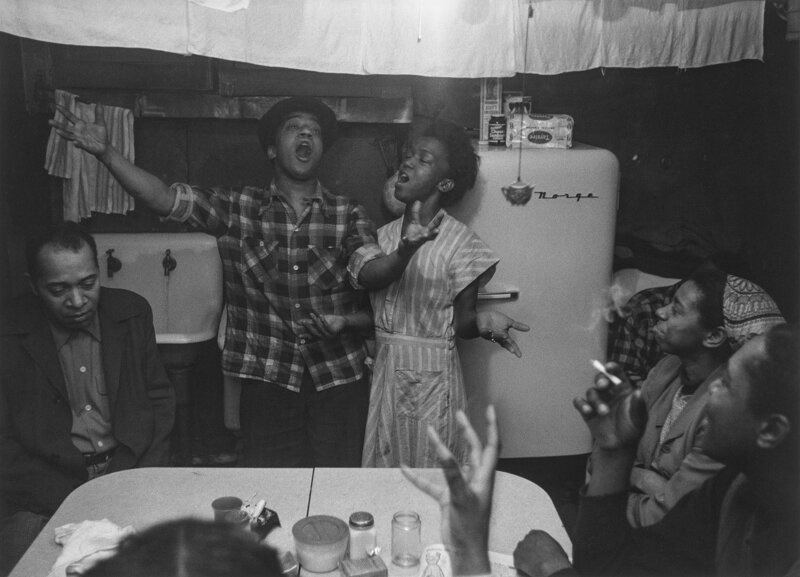
Roy DeCarava
Perhaps no other photographer is better known for capturing the paradoxes of Black life in mid-19th century Harlem and translating them into a powerful visual language only poetry could rival. Examining his striking black-and-white images, a sonorous melancholy instantly comes through. Roy DeCarava’s collaborative 1955 book The Sweet Flypaper of Life, featuring a fictional text by Langston Hughes, is a portrait of Harlem on the cusp of change and an ode to Blackness in the King Jr. era.
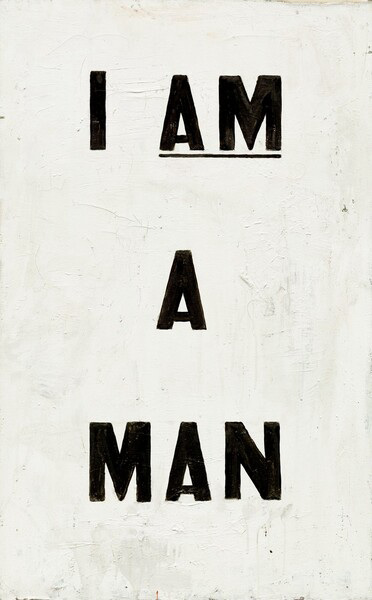
Glenn Ligon
Language is ever present in Glenn Ligon's work, which he uses to explore Black identity, marginalization, and erasure. Incorporating prose from seminal pieces like Zora Neale Hurston’s essay How It Feels to Be Colored Me, 1928, and Ralph Ellison’s Invisible Man, 1952, the conceptual artist demands that we reconsider these texts in a contemporary context. In Untitled (I Am a Man) from 1988—perhaps the artist’s most iconic work—Ligon includes the rallying cry of the 1968 Memphis sanitation workers strike, the very cause King traveled to Tennessee to support on the eve of his assassination.
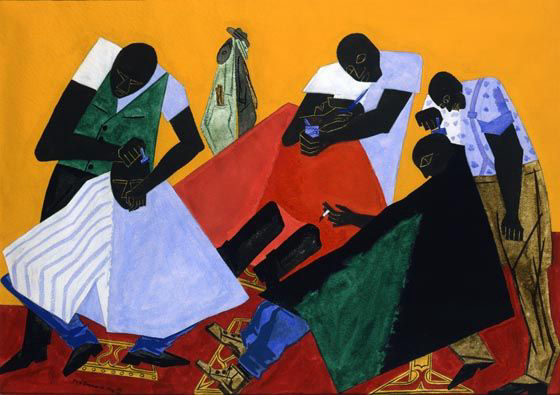
Jacob Lawrence
The renowned painter broke the mold of the racially divided 1940s art world to achieve an enviable status as one of the most lauded Black artists in America. Jacob Lawrence's dynamic, Cubism-inspired works depict the history of Black resistance, migration, and struggle using vibrant colors and shapes that speak to the movement, freedom, and power of Black culture in Harlem and beyond, at the brink of emancipation.
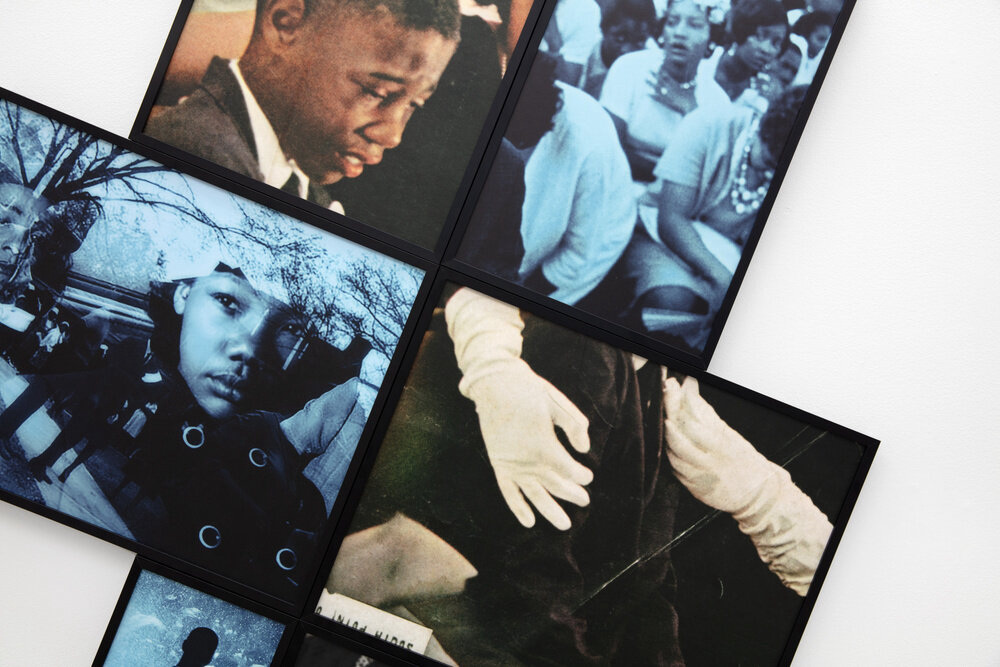
Carrie Mae Weems
Carrie Mae Weems considers it her artistic duty to interrogate the history unfolding before us every day. A MacArthur Fellowship artist, her photographs and immersive video installations draw on themes of loss, mourning, and cultural identity, capturing the sorrows of our time. Weems’s pandemic-era works reorient the resurgence of anti-Blackness and racialized violence in recent years by piecing together imagery and film from the Civil Rights Movement—namely photographs of Coretta Scott King and her daughter Yolanda on the way to King Jr.'s funeral—weaving past and present into one.
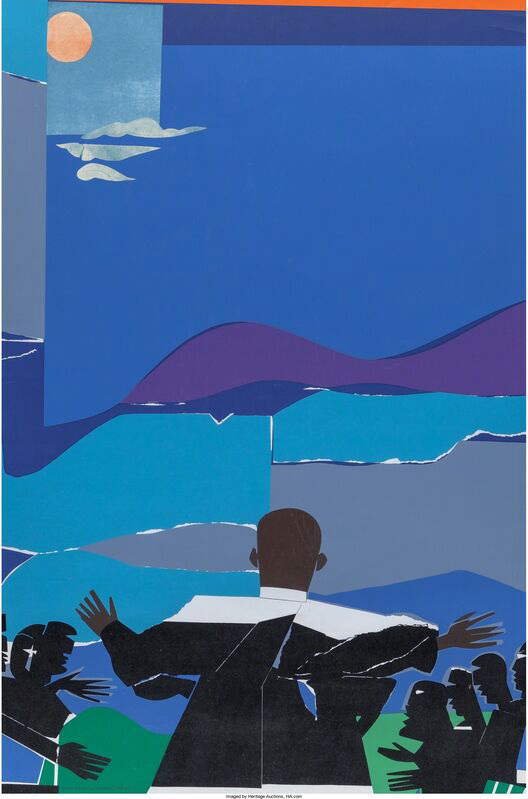
Romare Bearden
Born to parents who emigrated to Harlem from North Carolina, Romare Bearden is remembered for his collages, watercolors, oil paintings, and cartoons that depict everyday Black life with a distinct vibrancy and creative command. The artist and writer was a founding member of the Harlem Cultural Council, the Black Academy of Arts, and the Studio Museum in Harlem, helping pave the way for Black artists in New York.
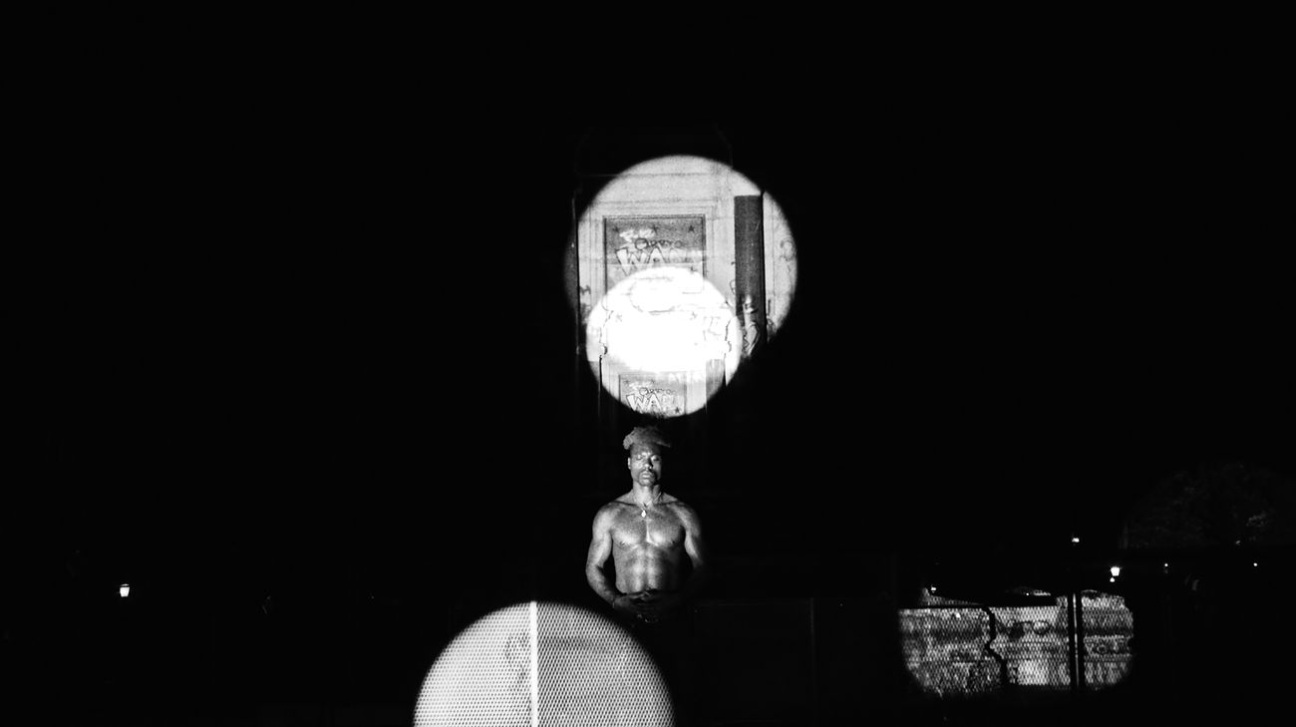
Adam Pendleton
This Richmond, Virginia-born conceptual artist appropriates texts from wide-ranging sources, fragmenting and obscuring the words to suggest that language is no longer a sufficient form of protest. Adam Pendleton’s multi-disciplinary works explore the dangers of race-based thinking, confronting the perils of our political moment head-on. During the 2020 uprisings in the wake of George Floyd’s death, he returned to his Virginia hometown to capture staged footage of the site surrounding the now dismantled monument of Robert E. Lee, implanting his own messages over the historic moment.
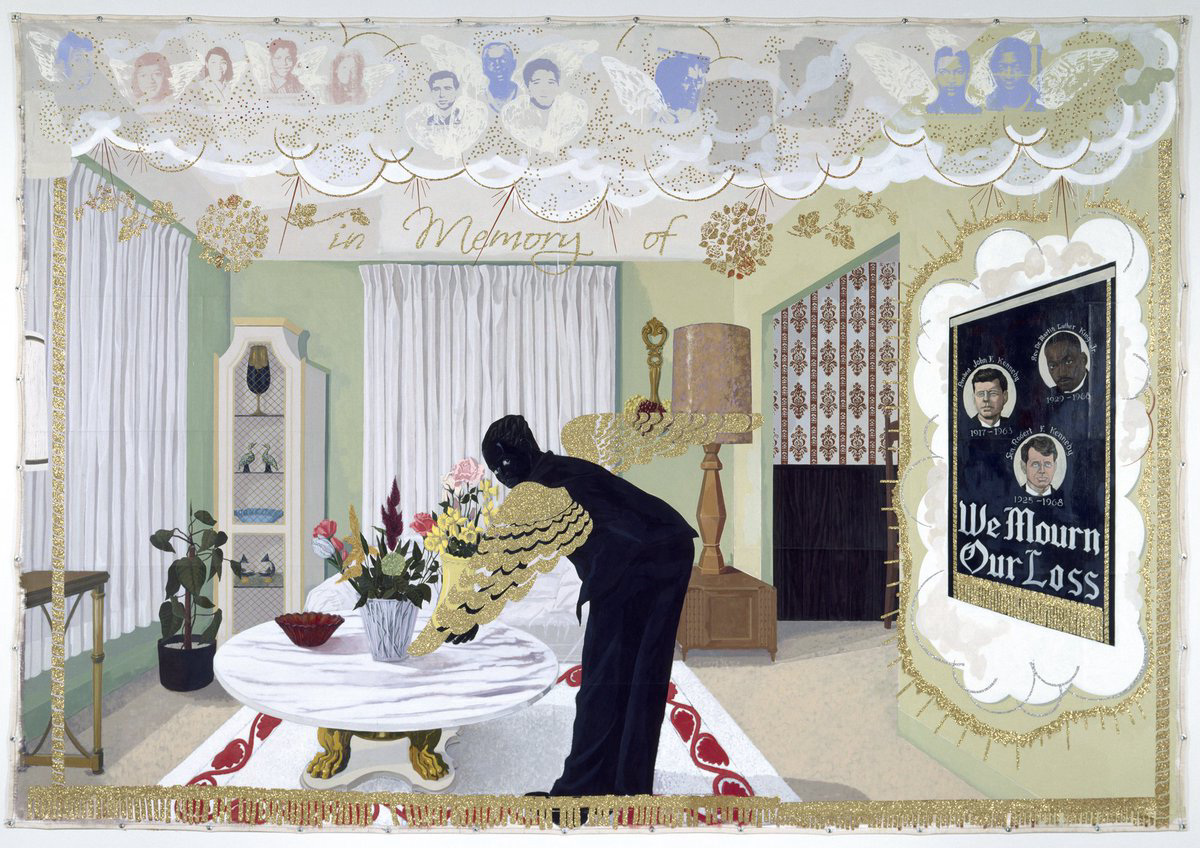
Kerry James Marshall
One of the most admired and commercially successful figure painters of our era, Kerry James Marshall challenges the biases of the art historical canon by rewriting Black life and culture into the narrative. Born in Alabama at the height of the Civil Rights Movement, much of the Chicago-based artist’s work is inspired by the nationwide state of grief that characterized his formative years. In his "Souvenir" series, Marshall invokes the idea of collective loss, mimicking the style of commercial souvenirs sold following King Jr.’s assassination.

LaToya Ruby Frazier
Chicago-based artist LaToya Ruby Frazier has committed her life’s work to documenting and archiving social, economic, and racial struggles, writing them into history through her camera’s frame. For a 2018 special issue of The Atlantic, she captured aerial footage of Memphis, Chicago, and Baltimore, documenting each city’s landscape of oppression 50 years after King Jr.’s murder. “These images are so much about the shadow, and the history, and the spirit of how King was there,” she told the magazine. “It’s like capturing the spirit of King Jr. in these landscapes.”










 in your life?
in your life?

